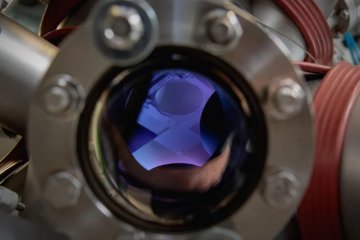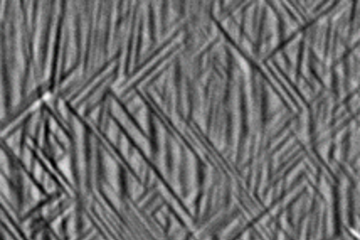All genres
1.
Journal Article
In situ nanoindentation during electrochemical hydrogen charging: a comparison between front-side and a novel back-side charging approach. Journal of Materials Science 56 (14), pp. 8732 - 8744 (2021)
2.
Journal Article
Author Correction: A strong and ductile medium-entropy alloy resists hydrogen embrittlement and corrosion. Nature Communications 11 (1), 3404 (2020)
3.
Journal Article
A strong and ductile medium-entropy alloy resists hydrogen embrittlement and corrosion. Nature Communications 11, 3081 (2020)
4.
Journal Article
Unravelling the effect of hydrogenon microstructure evolution under low-cycle fatigue in a high-manganese austenitic TWIP steel. International Journal of Plasticity 126, 102625 (2020)
5.
Journal Article
Dependence of hydrogen embrittlement mechanisms on microstructure-driven hydrogen distribution in medium Mn steels. Acta Materialia 183, pp. 313 - 328 (2020)
6.
Journal Article
Atomic level bonding mechanism in steel/aluminium joints produced by cold pressure welding. Materials 7, 100396 (2019)
7.
Journal Article
On the robustness of the Kelvin probe based potentiometric hydrogen electrode method and its application in characterizing effective hydrogen activity in metal: 5 wt. % Ni cold-rolled ferritic steel as an example. Science and Technology of Advanced Materials 20 (1), pp. 1073 - 1089 (2019)
8.
Journal Article
Spatially resolved localization and characterization of trapped hydrogen in zero to three dimensional defects inside ferritic steel. Acta Materialia 144, pp. 235 - 244 (2018)
9.
Journal Article
Nanoscale understanding of bond formation during cold welding of aluminum and steel. Advanced Materials Research 966-967 , pp. 445 - 452 (2014)
10.
Conference Paper
Influence of strengthening mechanisms and environmental conditions on the performance of ferritic steels. In: EUROCORR 2017 - The Annual Congress of the European Federation of Corrosion. Joint European Corrosion Congress 2017, EUROCORR 2017 and 20th International Corrosion Congress and Process Safety Congress 2017, Prague, Czech Republic, September 03, 2017 - September 07, 2017. (2017)
11.
Talk
Hydrogen embrittlement of medium Mn steels with ferrite matrix or austenite matrix. 4th High Manganese Steel 2019 HMnS, Aachen, Germany (2019)
12.
Talk
Corrosion of aluminum-steel joints produced by cold bulk metal forming process. EUROCORR 2015, Graz, Austria (2015)
13.
Talk
Effect of surface condition on the bond strength between aluminum and steel joint in cold welding. CETAS 2015, Düsseldorf, Germany (2015)
14.
Talk
Nanoscale understanding of bond formation during cold welding of aluminum and steel. 6th International Conference on Tribology in Manufacturing Processes & Joining by Plastic Deformation, Darmstadt, Germany (2014)
15.
Thesis - PhD
Charakterisierung von Wasserstofffallen und deren Einfluss auf die Wasserstoffversprödung in ferritischen Stählen. Dissertation, Ruhr University Bochum, Bochum, Germany (2018)
16.
Thesis - Master
Fügen von Stahl und Aluminium bei Raumtemperatur. Master, Fakultät Maschinenbau, Ruhr-Universität Bochum, Bochum, Germany (2014)











